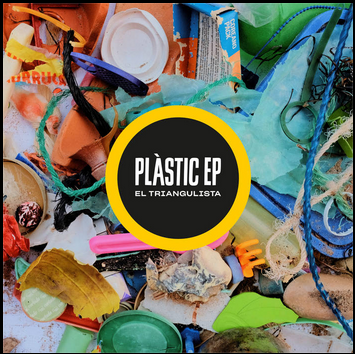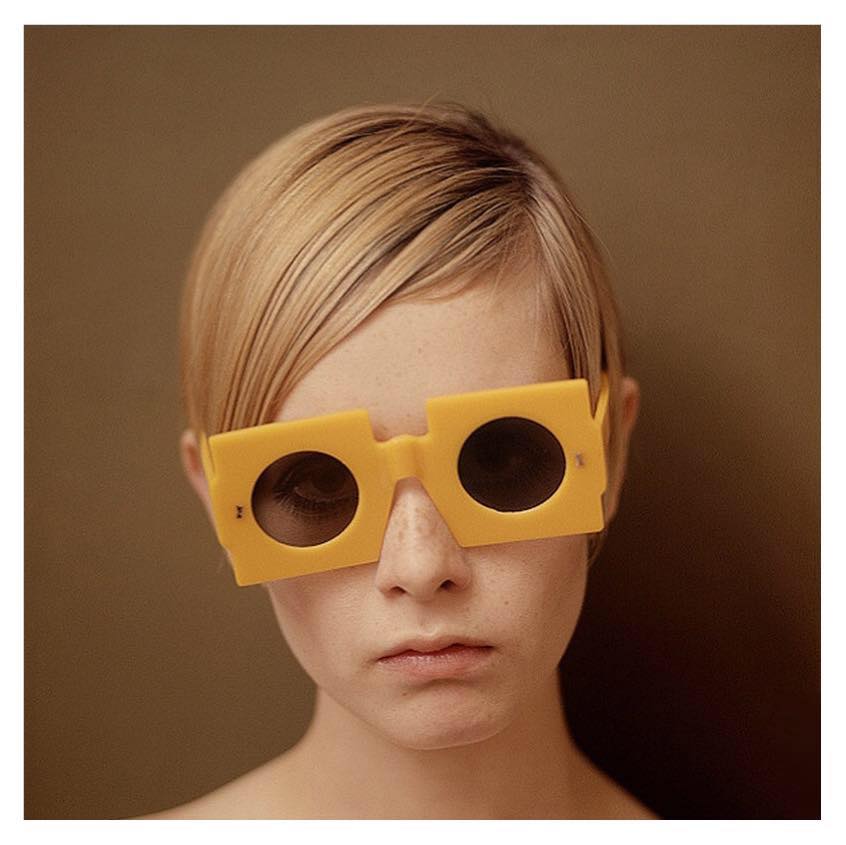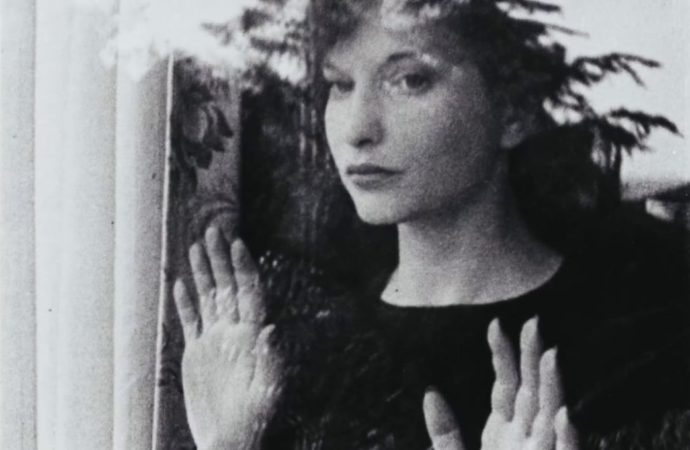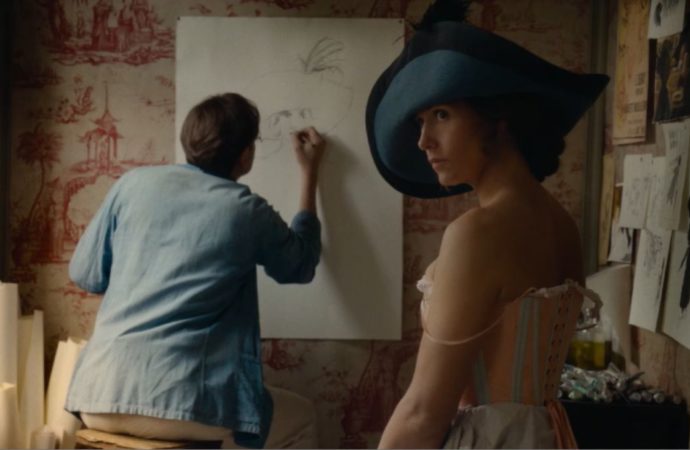Plàstic EP, the first work by El Triangulista, is an overwhelmingly sincere, fresh and spontaneous record with a series of four experimental tracks, carefully presented on a delicate limited edition vinyl.
This work, released by LaCasaCalba Ed., a sound collage that encourages us to save the world from environmental catastrophe with chords, barking dogs and singing children, starts with “Plàstic” as the first single, which is accompanied by an original video recorded by Pau Berga, and produced by TresDeu Mèdia and the Teatre del Raval de Gandia.
The video is a work full of unique and extraordinary gadgets and props, such as the hawk Pep el Xoriguer, the faithful companion of the protagonist’s adventures, and his own tricycle/home. Two pieces created by the artist and stage machinery builder Jordà Ferré (Antigua i Barbuda), which, together with the extravagant costumes of the main character designed by María Almudéver, transport the spectator to a parallel and fantastic universe.
“Plàstic” is followed by “Vas Elèctric”, a melancholically sweet melody, perhaps the least risky -despite the echoes that filter through at the end-, but also the most successful of the EP. The B-side is made up of “Demà comença ara” and closes with the lively and danceable “Paciència”, where the children’s choirs make their appearance, offering a little optimism in the face of a certainly dark horizon for the earth.
Certainly “Plàstic EP” is not an ordinary production – nor is its creator Francesc Burgos (Tavernes de la Valldigna, 1976), who is a kind of renaissance man, who both puts on a festival and directs a theatre company, and who has a long career as an ecological “artivist” and as a member of such crazy and unforgettable projects as Amanida Peiot and La POP, Petita Orquesta Peiotaire.
How does the new character of El Triangulista and the Plàstic album fit into your career after projects like La POP and Amanida Peiot? Would you say it’s a natural continuation?
To be honest, yes. My artistic projection is directly related to my life trajectory, and therefore runs through natural channels, full of very diverse tributaries and drains, like life itself. I really like the idea of the everyday in art, seeing the world through it, crossing its borders, marvelling at the small details, extracting references from the mundane, in a continuous learning process, unhurried, where the process is more important than the result; but also how and in what context you develop it. It’s not enough to have just any witty idea you have, there must be a reason, and you must always keep your eyes wide awake to find your “voice” in every project you do. In this sense, the previous projects, all of them choral, have helped me to develop the process of attentive listening, firstly, to my colleagues and, on stage, to the audience. The artist cannot live from the inside only, he must soak up what surrounds him, be a kind of creative sponge that projects and receives impulses and stimuli. For all these reasons, it is now that I have felt strong and experienced enough to be able to tackle my personal project. And the truth is that I’m having a great time.

Where does the inspiration come from for the creation of these parallel worlds from which characters like El Triangulista emerge?
Well, from life itself… A few years ago I received an email with the subject line: El Triangulista. It was about the contact of an acquaintance of a friend of my elder brother, who was a percussionist in the Orquesta del Palau de Les Arts and wanted to meet people different from that environment, full of operettas and zarzuelas —it was València’s casposa era—which didn’t interest him at all, and in which he mainly played the triangle. He was from the USA, but he didn’t come from classical music but from modern music. And from zarzuelas we took him to see a concert by Siniestro Total… From this anecdote, I constructed the character and his story in our context: that of a musician who begins to play in the village band, studies a common university degree in Valencia, but also finishes the music school and gets a position as a percussionist in a philharmonic orchestra on the meseta, which he resigns a few years later because of the depression he felt playing only the triangle, after so much sacrifice.
His name, a nickname given to him by his colleagues in the philharmonic, was the only thing he kept from that period. So, after leaving the orchestra he returns to the village and it is when, hidden in the attic of the family home, he has a revelation, a crucial encounter, with his late uncle Ramonet de Colau, the family’s crazy inventor, who gives him a pedal carriage and a tin bird, with which to travel the world and have all kinds of adventures. This kind of life journey is being staged as a live series in chapters. So far we have made Chapter 0, Filharmònica, and Chapter 1, Plàstic-tic-tic!
The latter is the one we are still filming in theatres and squares in the towns and cities where we are called, and the one that is related to the “Plàstic EP”, as they are the songs that are played in the show, although with different arrangements. Throughout this process, it is worth mentioning the participation in the dramaturgy and stage direction of Ximo Vidal, a historic figure of Valencian theatre, member of Pluja Teatre, a reference company of modern theatre in our land since the early 70’s. And we are already thinking about the next chapter of the saga, which will surely deal with the subject of weapons, among which one of them stands out, due to its danger and real threat: nuclear weapons.

It’s an album that can’t be put into any particular category… if you had to talk about an inspiration, an influence… Who comes to mind?
More than artists, I use the game and experimentation as a source of inspiration and work in the studio (and on stage, too). And this time I’ve taken it to the extreme, because it’s a personal project, in which I haven’t had to agree on anything; nor have I been limited to recording the songs in a certain way to be able to take them live. In the show they sound more skeletal, because I’m alone on stage. Some of them are spoken, others with the accompaniment of the electric guitar. The only one that hasn’t changed in terms of arrangements is the instrumental, “Vals Elèctric”, which sounds recorded in the show, as it serves as a thread and a link between scenes and actions. Even so, I remixed and mastered it again for the EP. In that sense, it has been a posteriori where the influences have appeared… For example, my good friend and great artist, Dr. Truna, when he heard the version of “Plàstic” included in the EP, Tom Waits came to his mind. Well, that’s good. I love him, he’s one of my references. When I listen to “Demà comença ara”, The Flaming Lips or Pink Floyd come to mind, because of the psychedelic cadence, the use of distorted bass or curious sound resources, such as house keys or the invented bells of the luthier Ángel Di Stéfano, with whom I have collaborated on different projects. In fact, we are now making a new sound production together, “Pull&Play Project”, a stage project that we are developing together with Cento Carbó and Ruth Palonés, and with the collective of deaf people of Gandia, which has been selected in the state programme of the Fundació La Caixa, Art for change. We are very excited about the project!
Finally… The album is released at a time when climate change is on the agenda and in the media. Apart from the interest you have in the subject because of your academic background, how much do these concerns influence “Plàstic”?
Although art can be understood, intrinsically, as a “useless” activity, some currents point out that art as a way of life will remain as long as it responds to real needs, an aspect that doesn’t necessarily have to do with fashions, nor with the market… In this sense, we are at a turning point on a planetary scale, already rushing the last curve towards the precipice, from an environmental and social perspective. And I’m not saying it myself, scientists have been announcing it for half a century! And this is an artistic project with a clear environmental vocation; although it is not a pamphlet, the artistic motivation comes first. Another thing will be how people evaluate it, whether they like it or not, whether it moves them or not. The vibrations, for now, are good, and as long as I have ideas and enthusiasm to materialise them, I will continue in the breach, proposing alternatives, from my humble corner.









No one has posted any comments yet. Be the first person!